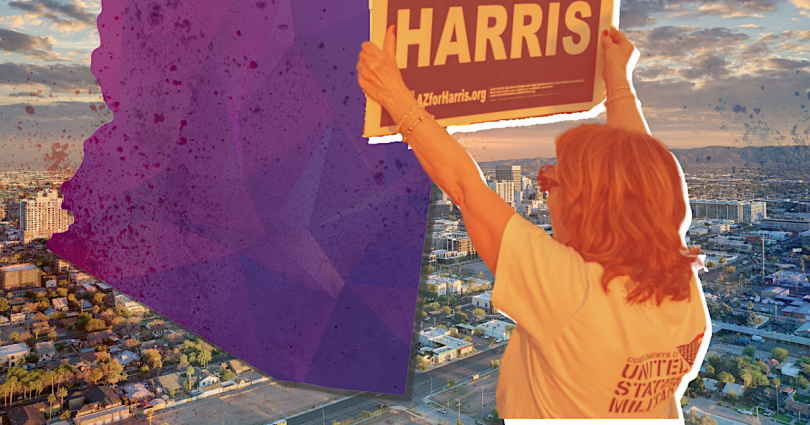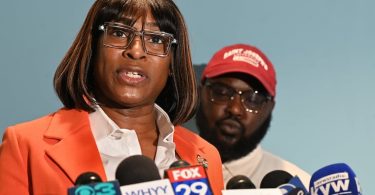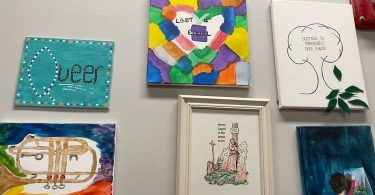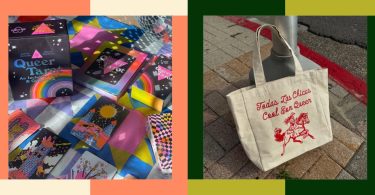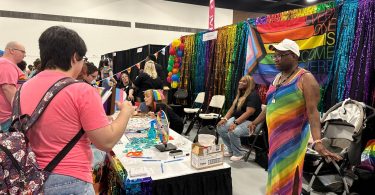When it rains in the high plains of northern Arizona, the land that is normally filled with golden brush turns into rolling green fields that blend into towering mountains speckled with yellow Brittlebrush, orange Globemallow, and lavender Buttonweed.
This isn’t the Arizona most people think about when they envision the Grand Canyon State, with its scorched desert landscapes and two-armed Saguaro cacti; it’s the part of Arizona people often forget about—or simply never know about since most of the state’s population is heavily concentrated in the southern region of Maricopa County about 100 miles south, home to the nation’s fastest-growing cities such as Phoenix, Glendale, Buckeye, and Mesa, amassing a general population of 4.8 million people who are spread across 14,000 square miles.
It’s also where the nation has its eyes set on the results of the November 5th election. Some of the tightest races have been won for Democrats, and Republicans have made the most far-flung attempts to change the outcome of those races without success.
Those wins for Democrats have created a surge of enthusiasm and hope among many that the long-held Republican state legislature might flip to Democrats or — at the very least — be split evenly between the two parties.
Your LGBTQ+ guide to Election 2024
Stay ahead of the 2024 Election with our newsletter that covers candidates, issues, and perspectives that matter.
But a shift to a blue Arizona is a polarizing conversation in some LGBTQ+ circles — not among political divides but among those skeptical that anything will change for the better once it happens.
“Arizona is still very conservative,” said Celleste Murtagh, a Downtown Phoenix-based queer resident who was raised in Glendale. She said her family, which is comprised of Christian evangelicals and has deep conservative roots, are “dyed-in-the-wool” Republicans but are having a tough time with the extremism of the GOP as it is today.
A vote for a Democrat could, indeed, be a vote for a more “blue” Arizona. But Murtagh says that’s a technicality.
“I don’t know that this shift to purple is Arizona becoming way more progressive than it’s previously been as much as people from the right aren’t feeling great about where the right is at right now,” she said.
Murtagh is not alone.
Just like the national perception of Arizona’s landscape versus reality, there are countering narratives between Arizona on the national stage as a shift to more “blue” politics and what people here understand to be a more centrist movement in becoming “less extreme.”
No other community feels that more than the queer community: On one hand, the rise in Democratic leadership has meant a possibility for safety, such as a statewide anti-discrimination law that lawmakers have failed to pass for five years. But on the other hand, being a purple state hasn’t translated as a shift to “blue” — not by far.
In interviews with LGBTQ Nation and LOOKOUT, queer residents, candidates, and organizers said they are hopeful that Arizona’s continuing move to the center could mean a shift to more progressive ideals, particularly on LGBTQ+ rights. But the reality for queer people who have lived here is that for every step made toward progressivism over the years, it has been met with stagnation and steps backward as conservatives try to maintain power, they said.
That’s come, also, with the tacit endorsement of certain LGBTQ+ groups that would appear to go against the grain of where the community in general would prefer to go.
The Log Cabin Republicans, the nation’s largest LGBTQ+ conservative membership group, has a sizable following in the state, with members holding office and being appointed to some of the highest levels of state government. Members of Gays Against Groomers have been invited to the Capitol as guests, are endorsed by local elected leaders, and have even run for city office on an anti-LGBTQ+ campaign.
Still, Democrats have been organizing Independents and Republicans under LGBTQ+ rights, abortion rights, protecting teachers, and housing security and seeing immense gains — both anecdotally and quantitatively.
And it appears to be happening everywhere.
Old Town Cottonwood, Arizona. Photo: Shutterstock.
When Llama Habern moved to Cottonwood, Arizona, three years ago, they were worried about the politics of the region. Openly gay and with tattoos of various queer flags hidden under their shirt, it was a shock when they drove into town to find a large Trump flag as the city’s main greeting.
“I wondered if I should turn around,” Habern remembered thinking.
But there is a reality to small-town Arizona living that Habern was quick to learn, which is that most of everyone there believed in the Arizona truism of “live and let live”— and that included being gay.
In fact, Cottonwood has long been a “purple” area, at least on LGBTQ+ issues.
Despite being primarily Republican, the area has been considered safe among locals as a popular vacation spot. Pride flag stickers are displayed on business windows throughout downtown.
And when far-right Christian nationalists from out of town flooded the city last year when a touring rural drag show came to put on a performance at a city-owned venue, it was residents of all political backgrounds who banded together to show up for the LGBTQ+ community in support. Eventually, they organized to recall Republican City Councilor Lisa DuVernay, who used the opportunity to attack trans kids and drag queens. The city then voted in a progressive mayor, Ann Shaw, this past June to break the divisiveness and bring focus back to city business.
For those outside of Arizona, the flashpoint and whiplash to vote for a Democrat may be more proof of the state’s progressive shift to the left. But for people who live in Cottonwood, it’s more evidence of the area’s strong Independent leanings. (Arizona is one of the few states in the Union where registered Independents are a sizeable majority voting bloc — the second-largest in the state, just below Republicans.)
“We weren’t solving city issues,” said Julie Fernatt, who works with Habern at the Rural Organizing Initiative, a local movement group that pushes for more political diversity on down-ballot races locally, including progressive candidates.
Cottonwood isn’t unique in this; Arizona has long had enclaves of people who move to the Southwest to seek out what Fernatt calls “the challenge,” to defy political parties and play into the Independent lifestyle.
“I think people who live here tend to feel strong,” she said, speaking to the resilience of those who choose to brave out the harshness of living in Arizona’s wilds.
For many Americans, this is the first time they have witnessed how the strength of Arizona’s Independents could be used to tilt the election in one candidate’s favor.
Arizona state representative Lorena Austin. Photo provided.
That same kind of shift away from extremism on the right is what state Rep. Lorena Austin (D) is seeing in their district of West Mesa, a former Republican stronghold that until two years ago was considered an easy win for conservatives.
But as more people moved into the former land of orchards, the area evolved from a blue-collar enclave in the ’90s to a mixture of strip malls filled with Asian markets and Latino restaurants, art fairs, and burgeoning college hangouts.
Austin, who is the state’s first and only nonbinary Chicane legislator, attributes that progressive change as a demand to see more diversity among local lawmakers. They ran two years ago, they said, to see their home represented more accurately.
“I come from a district that has very low voter turnout, and people haven’t voted in many cycles and lost faith that their vote matters,” they said. “I didn’t go [to the House] to be the first queer anyone; that is not why I came to the legislature. I came because someone who looked like my community wasn’t running.”
It wasn’t just LGBTQ+ issues that drove Austin to run and arguably win in Mesa. Residents have long had concerns regarding water and education funding, both priority issues that a majority of Arizonans believe need to be addressed in state politics, according to a 2024 survey by the Center for the Future of Arizona.
And in a region that has seen a swell of activity at its southern border, voters also believe that the immigration crisis is a humanitarian issue that requires comprehensive reform, according to the same poll. At the same time, Republicans in the state legislature this past session pushed a voter initiative that could allow for racial profiling of people who police believe to be in the state illegally.
“The Arizona Republican party has been taken over by extremists.”
But the shift in Austin’s district hasn’t been just because of diversity, it’s also due to, as Austin said, a distaste of Republican politics that has taken hold of Arizona’s GOP, which has gone further into the hands of Donald Trump.
“The Arizona Republican party has been taken over by extremists. This used to be the Republican Party of John McCain,” they said, pointing to the increased anti-LGBTQ+ rhetoric that has shown to be, in some circumstances, a poison pill for some Republicans who have shown a willingness to ease off LGBTQ+ attacks in order to win over voters.
Still, the anti-LGBTQ+ playbook—as unpopular as Austin says it might be — is working quite well, as proven by the interactions between residents and state Rep. Analise Ortiz (D), who is running for state Senate in her district of West Phoenix. For many of the Republican voters’ doors she knocks on, gender issues in schools are top-of-mind.
Democratic state senate candidate Rep. Analise Oritz (far right) says Arizona “voters really recognize that shift to the right.” Photo provided.
“I will hear people say that the public schools are letting boys into girls’ bathrooms,” she said, adding that she works with residents to try to understand where they heard the misinformation from and then explain how it’s not true.
But just as local Republicans have shifted right, state Democrats have also shifted to the center, giving credence to the feeling many queer voters have that going “purple” doesn’t necessarily equate to a progressive movement for their own rights, such as passing an anti-discrimination ordinance or banning conversion therapy in the state — both of which have failed in the legislature multiple times.
Ortiz said that feeling voters have could be because statewide Democrats, in order to win races, have drawn in moderate Republicans and Independent voters, which could signal to queer people an abandonment of those issues.
“I think voters really recognize that shift to the right,” she said.
Supporters rally for US Vice President and Democratic presidential candidate Kamala Harris in Gilbert, Arizona, on September 23, 2024. Photo by Olivier Touron / AFP via Getty Images.
While there is an argument to be made that Arizona’s political shift is due to Democrats drawing in Republican voters who are souring on their party, that wouldn’t make up for the seismic effort Arizona has seen to vote in a Democratic governor, close in a sizeable margin in the state legislature, and vote for President Joe Biden in the 2020 election.
There is also a reality that Arizona, with its cities becoming more urban and suburbs booming and growing to be more enticing for young families, is just simply becoming less Republican. In 2000, Republicans were 44% of registered voters across the state. That number has slowly dwindled to 35%, with Democrats now representing 29% of the vote and Independents representing the largest shift, going from 15% of the vote two decades ago to 33% of all registered voters today, according to the Arizona Secretary of State’s website.
And beyond party registration, the look of Arizona has changed. When Bridget Sharpe, state director for the Human Rights Campaign of Arizona, grew up in North Phoenix, the area “used to be a dirt road,” she said.
That area now is unrecognizable with sprawling outdoor malls, event venue spaces, condominiums, and the area’s most established fine-dining restaurants. It also happens to be another purple district, with two Democrats, state Reps. Judy Schweibert and Christine Marsh, elected in 2022.
“These are relatively strong Democrats who are both representing [the LGBTQ+ community] at the legislature,” Sharpe said. “When you think of North Phoenix, you don’t really think of these LGBTQ+ allies, but there’s been a gradual change from that assumption.”
Sharpe attributes that change to the staying power of young people, who historically have left Arizona and been replaced by retirees who “called the shots,” Sharpe said, “But Arizona is now very young, and there’s a generation of youth that have just started voting that want to stay here and continue to change this place and don’t want to flee to Chicago or New York or LA.”
The message Sharpe has for people who read the headlines about Arizona is clear: “There is a view that Arizona is bright red, and that’s unfortunate. But at the same time, we are purple for a reason,” she said. “I would warn people against accepting this view of Arizona as the ‘Wild West.’ I just don’t think that’s true anymore.”
This story was produced in partnership with LOOKOUT, a nonprofit news organization serving Arizona’s LGBTQ+ community through accountability journalism. Sign up for their newsletter here.
Trump has called early voting “stupid stuff” and is instilling false claims of voter fraud. How are you planning on voting to ensure your vote counts?
Ballot drop box
In-person at polling location
Abstaining
Unable to vote (not a citizen, age, etc)
Subscribe to the LGBTQ Nation newsletter and be the first to know about the latest headlines shaping LGBTQ+ communities worldwide.
Don’t forget to share:

